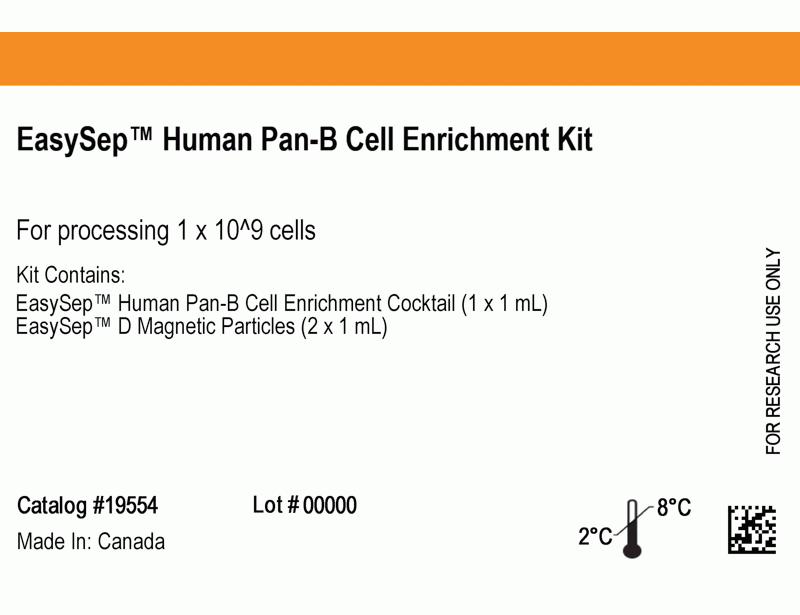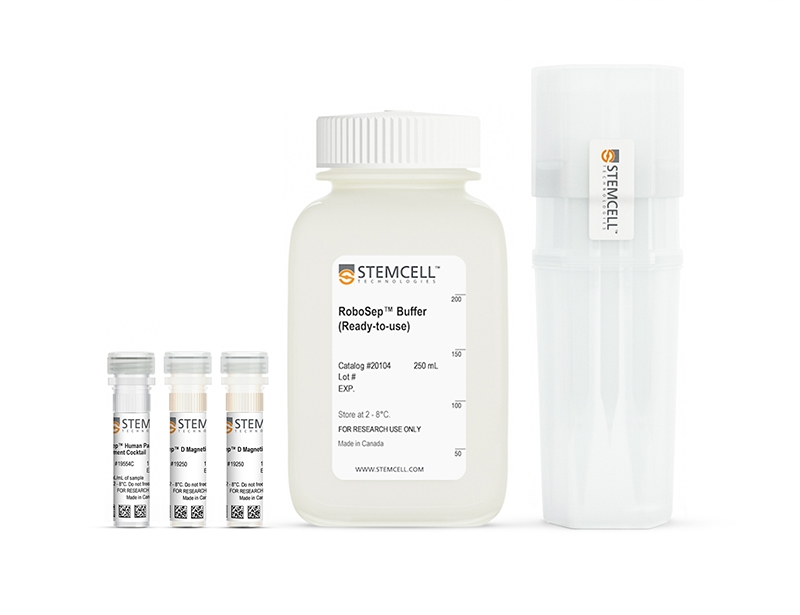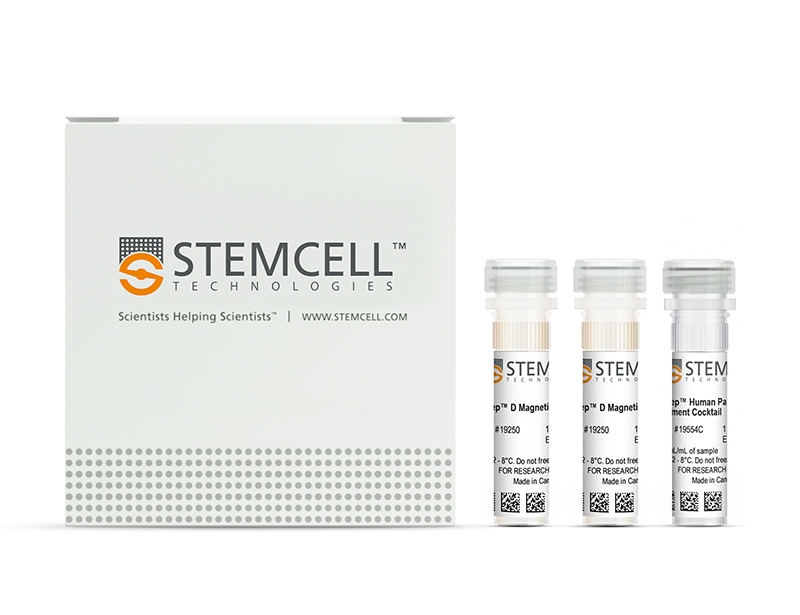概要
The EasySep™ Human Pan-B Cell Enrichment Kit is designed to isolate B cells including plasma cells from normal fresh or previously frozen peripheral blood mononuclear cells by negative selection. Undesired cells are targeted for removal with Tetrameric Antibody Complexes recognizing CD2, CD3, CD14, CD16, CD36, CD42b, CD56, CD66b, CD123, glycophorin A and dextran-coated magnetic particles. The labeled cells are separated using an EasySep™ magnet without the use of columns. Desired cells are poured off into a new tube.
技术资料
| Document Type | 产品名称 | Catalog # | Lot # | 语言 |
|---|---|---|---|---|
| Product Information Sheet | EasySep™ Human Pan-B Cell Enrichment Kit | 19554 | All | English |
| Product Information Sheet | RoboSep™ Human Pan-B Cell Enrichment Kit | 19554RF | All | English |
| Safety Data Sheet 1 | EasySep™ Human Pan-B Cell Enrichment Kit | 19554 | All | English |
| Safety Data Sheet 2 | EasySep™ Human Pan-B Cell Enrichment Kit | 19554 | All | English |
| Safety Data Sheet 1 | RoboSep™ Human Pan-B Cell Enrichment Kit | 19554RF | All | English |
| Safety Data Sheet 2 | RoboSep™ Human Pan-B Cell Enrichment Kit | 19554RF | All | English |
数据及文献
Data

Figure 1. FACS Profile Results With EasySep™ Human Pan-B Cell Enrichment Kit
Starting with nucleated cells, the pan-B cell [Lineage (CD4, CD8, CD14, CD16, CD56) negative, CD19+ and CD19-CD43+] content of the enriched fraction typically ranges from 90 - 99%.
Publications (2)
Nature communications 2016 NOV
Germline-encoded neutralization of a Staphylococcus aureus virulence factor by the human antibody repertoire.
Abstract
Abstract
Staphylococcus aureus is both an important pathogen and a human commensal. To explore this ambivalent relationship between host and microbe, we analysed the memory humoral response against IsdB, a protein involved in iron acquisition, in four healthy donors. Here we show that in all donors a heavily biased use of two immunoglobulin heavy chain germlines generated high affinity (pM) antibodies that neutralize the two IsdB NEAT domains, IGHV4-39 for NEAT1 and IGHV1-69 for NEAT2. In contrast to the typical antibody/antigen interactions, the binding is primarily driven by the germline-encoded hydrophobic CDRH-2 motifs of IGHV1-69 and IGHV4-39, with a binding mechanism nearly identical for each antibody derived from different donors. Our results suggest that IGHV1-69 and IGHV4-39, while part of the adaptive immune system, may have evolved under selection pressure to encode a binding motif innately capable of recognizing and neutralizing a structurally conserved protein domain involved in pathogen iron acquisition.
Blood 2016 APR
HIF-1α regulates the interaction of chronic lymphocytic leukemia cells with the tumor microenvironment.
Abstract
Abstract
Hypoxia-inducible transcription factors (HIFs) regulate a wide array of adaptive responses to hypoxia and are often activated in solid tumors and hematologic malignancies due to intratumoral hypoxia and emerging new layers of regulation. We found that in chronic lymphocytic leukemia (CLL), HIF-1α is a novel regulator of the interaction of CLL cells with protective leukemia microenvironments and, in turn, is regulated by this interaction in a positive feedback loop that promotes leukemia survival and propagation. Through unbiased microarray analysis, we found that in CLL cells, HIF-1α regulates the expression of important chemokine receptors and cell adhesion molecules that control the interaction of leukemic cells with bone marrow and spleen microenvironments. Inactivation of HIF-1α impairs chemotaxis and cell adhesion to stroma, reduces bone marrow and spleen colonization in xenograft and allograft CLL mouse models, and prolongs survival in mice. Of interest, we found that in CLL cells, HIF-1α is transcriptionally regulated after coculture with stromal cells. Furthermore, HIF-1α messenger RNA levels vary significantly within CLL patients and correlate with the expression of HIF-1α target genes, including CXCR4, thus further emphasizing the relevance of HIF-1α expression to CLL pathogenesis.

 网站首页
网站首页




